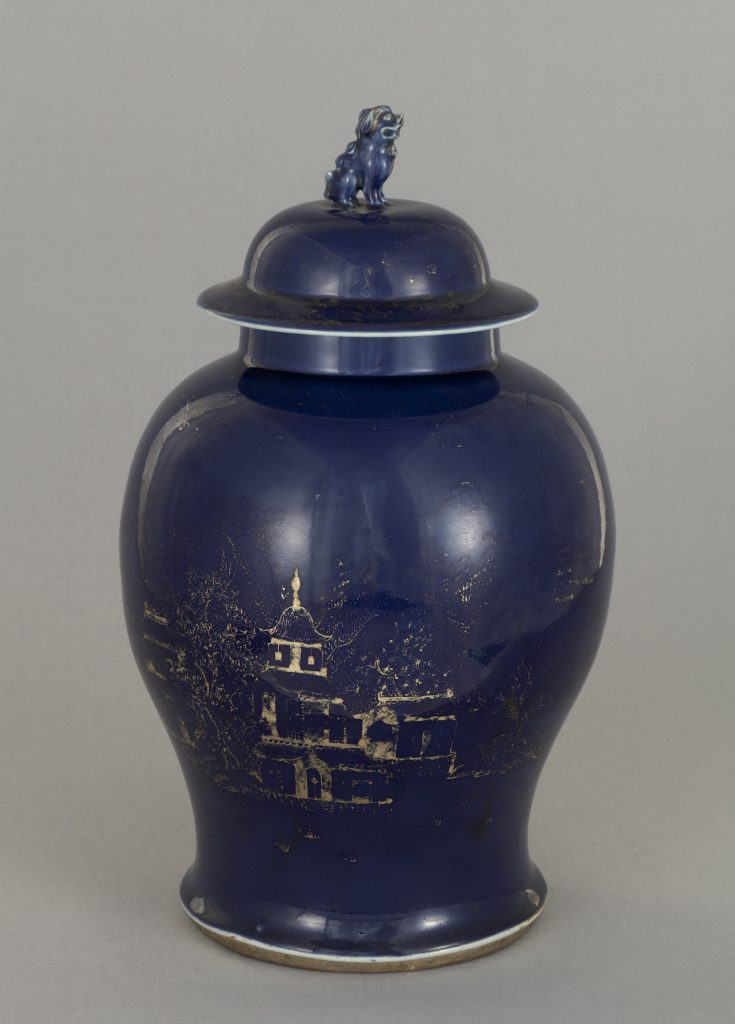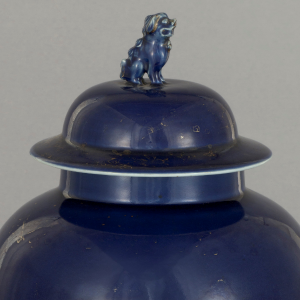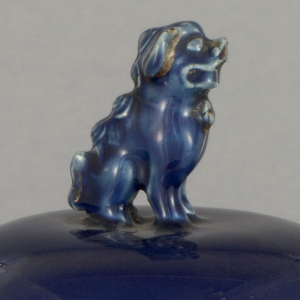Pot
Author: Unknown
Origin: Jingdezhen Kilns, China
Dating: 1700-1722 (Qing Dynasty, Kangxi period)
Material: Porcelain
Dimensions (cm): 46 x Ø 28,5
Inv. no.: PD0170
One of two baluster shaped pots with a dome-shaped fitting lid and a seated lion shaped knob. It is of a heavy white porcelain. On the exterior – resorting to the “blown blue” technique over a colourless, shiny and regular glaze in the entire surface – one may see traces of gold decoration. Even though they are faded, pavilions and pagodas are visible. On one side, these Oriental motifs are set in a mountainous landscape and, on the other, they are framed by leafy trees. On the shoulder and on the lid there are friezes of leafs and flower scrolls. On the dome, there are traces of a full landscape decoration.
The “blown blue” technique consists of blowing powdered cobalt blue pigment through a bamboo cane – wrapped at the end in gauze – over the raw surface of an object. This produces cloudy blue shades, built up by overlapping adhered particles, which may present a variable spectrum of blue tones – from the deepest sapphire to the faint greyish blue.
Kangxi Period
The Kangxi Emperor was one of the most important in Chinese history. His 61-year reign (1662-1722) was the longest in Chinese history and consolidated the power of the new Qing dynasty.
In terms of porcelain production, the Kangxi period was both innovative and a continuum of various techniques used previously. A large investment was made in the Jingdezhen manufacturing centre, reaching 3000 kilns.
The painting techniques, which developed during the Ming dynasty, reached a high level of technical refinement during the Kangxi period. In addition to the production of “blue and white” porcelain, the Famille-Verte (Green Family) was created – a palette composed of green, iron red, yellow, and purple, with blue enamel being added later (c. 1700).
This period became an era of great splendour that continued through the following reigns.





